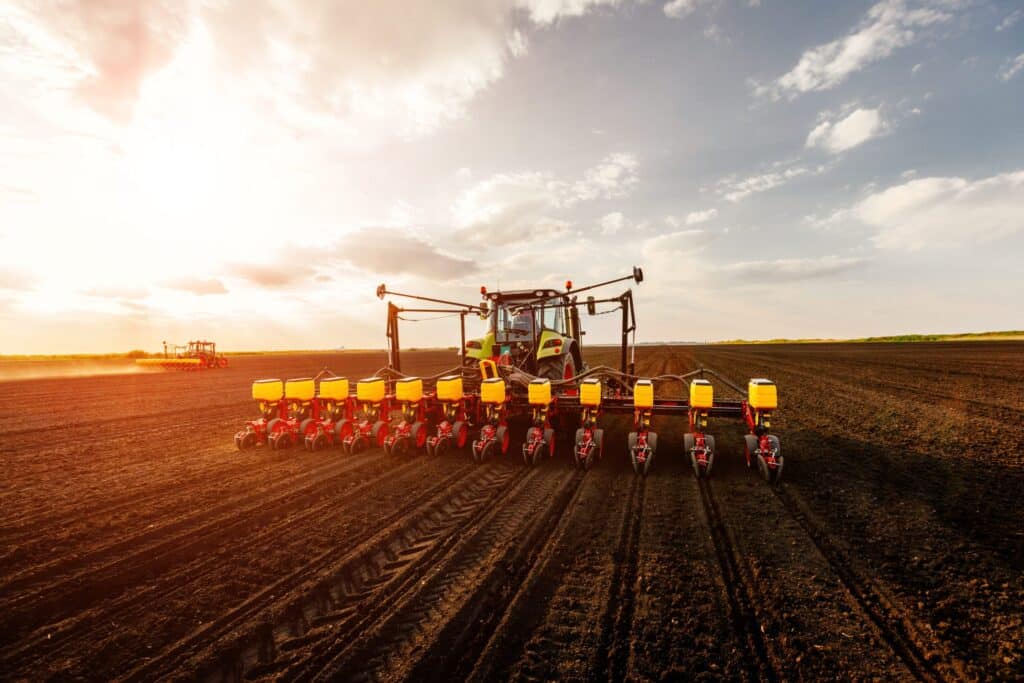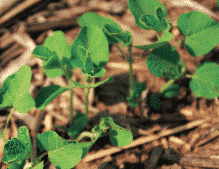Even with great genetics, seeds are vulnerable from the time of planting to when crop stand is established. From seed-loving larvae to wet soil, your yield can be negatively impacted by a variety of externalities before crops germinate.
Farmers who have experienced tough years in the past know how valuable a seed treatment investment can be. The biggest threats to seeds and early crop development are pests, diseases, and environmental stressors. So, most seed treatment programs include multiple modes-of-action to optimize seed genetic potential.
Here’s how to stop the three biggest threats to seed with a seed treatment program including fungicides, insecticides, and abiotic stress reducers.
Deter Pests with Insecticides
A coating of insecticides can protect your seeds from below and above ground insects and larva. It’s an extra deterrent where it’s most needed.
The specifically placed, high-concentration pesticide is considered a regenerative practice compared to insecticide sprays. It helps growers protect crops from various insects without causing run-off or leaching.
No-till practices protect the soil microbiome but means your spring seeds are at risk for pest infestations. Post-harvest residue improves soil physical properties and reduces soil erosion during the non-growing season. No-till and low-till farmers should highly consider insecticides as part of their seed treatment plan.
Keep Disease Off Your Seed
Diseases aren’t always a disaster for one growing season. Rather, they’re often a reoccurring nightmare for growers. This year’s seeds, and future seeds, could be at risk of infection.
Luckily, there are seed treatments to keep seed diseases at bay. For example, there are both good and bad fungi in your fields. Use a fungicide to ensure fungal pathogens don’t damage or kill your seeds.
While you’re investing in seed treatments for this season, also take steps to create disease-resistant soil.
Mitigate Abiotic Stress from Environmental Influences
Droughts and floods create stress for seeds and crops. When you plant into wet soil, there’s a higher likelihood of abiotic stress, pathogen infection, and increased soil compaction. Wet soil and fluctuating weather, including unexpected temperatures, can also force growers to plant later in the season.
Nematicides, inoculants, flow additives, biostimulants, and nutrients help seeds grow, despite abiotic stress. Seed treatments can support root development, increase germination and stand establishment, reduce abiotic stress, and feed beneficial microbes.
When soil microbes are fed a carbon-rich product in the immediate area around the seed, they support the seed’s health. This area, known as the spermosphere, is your crop’s first experience with the “real world”. Activated beneficial microbes increase germination, improve soil conditions, and mitigate abiotic stress for seeds and crops.
Don’t Wish You Would’ve Made a Seed Treatment Plan This Year
Each year, growers make a bet, and then wait for the cards to be dealt. Some years you’ll have a winning hand, full of aces, early planting windows, just enough water, and sunshine.
Others, you might not be so lucky, and instead could be stuck with random cards and smut.
Those left with a losing hand will wish they invested in insurance for a better hand. Between 20-40% of agriculture production is lost to pests and diseases annually, worth roughly $290 billion globally.
Don’t let your farm add to the losses. Work with a trusted crop adviser to create a seed treatment plan to protect your crops from pests, diseases, and environmental stressors.









